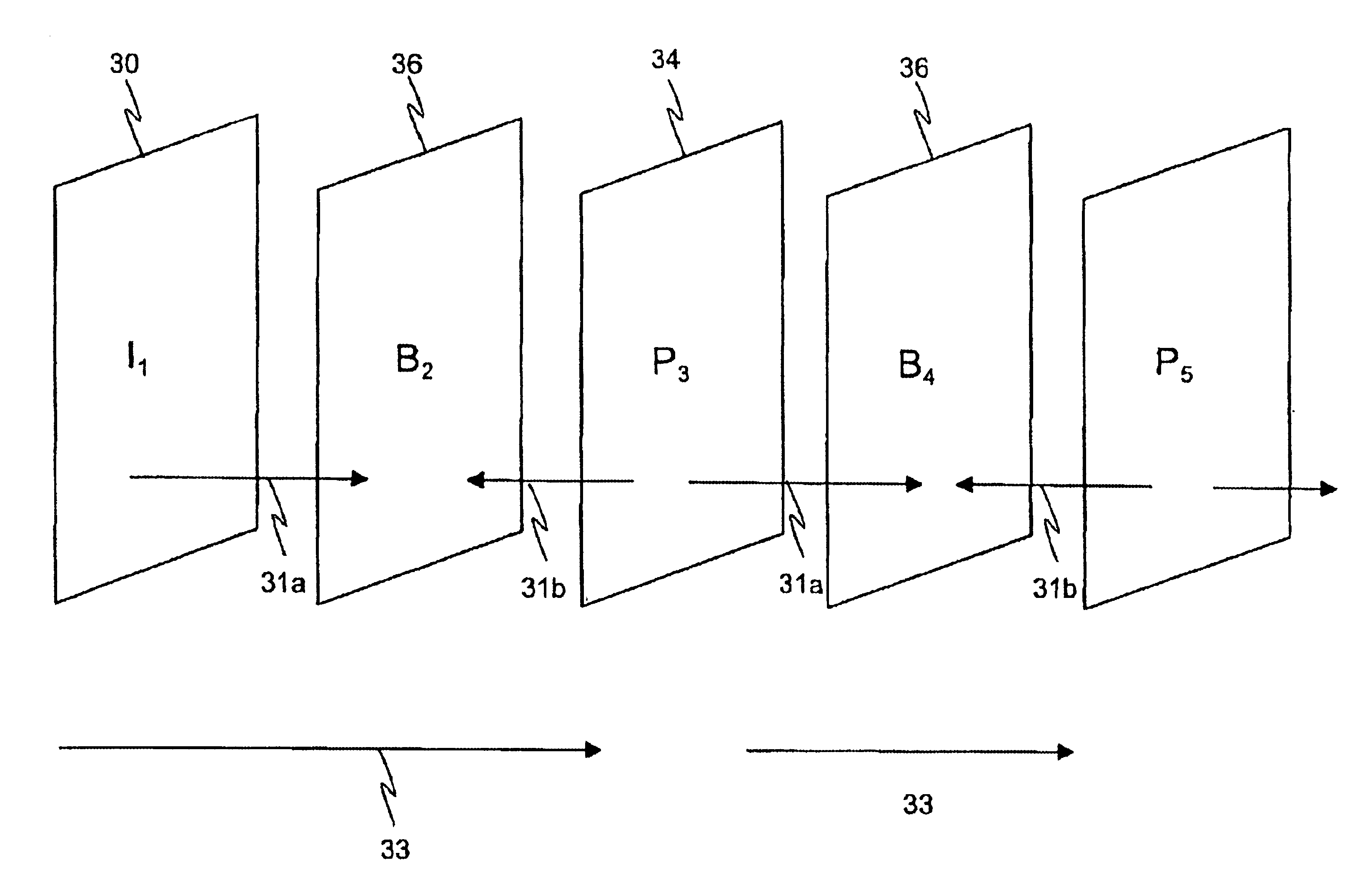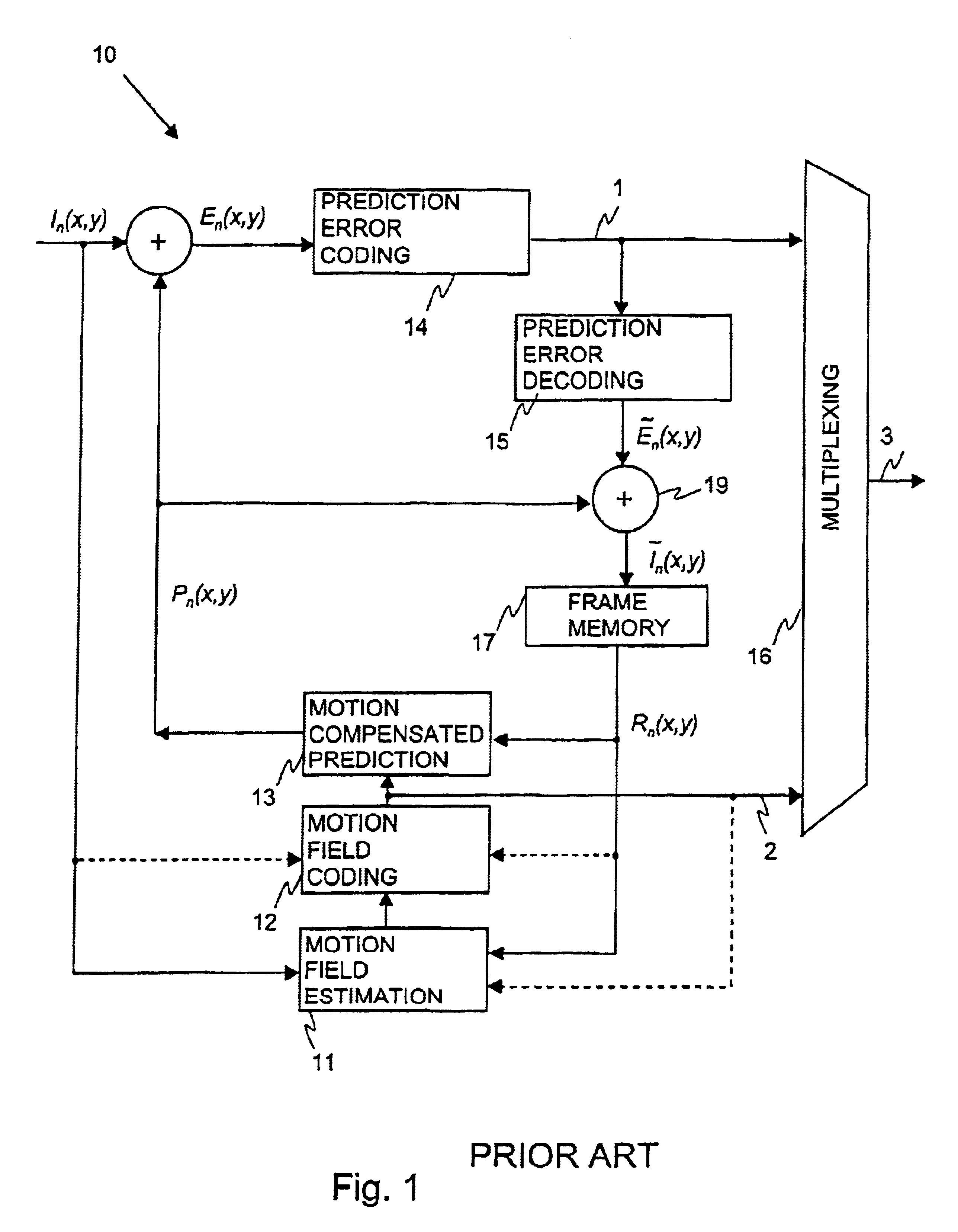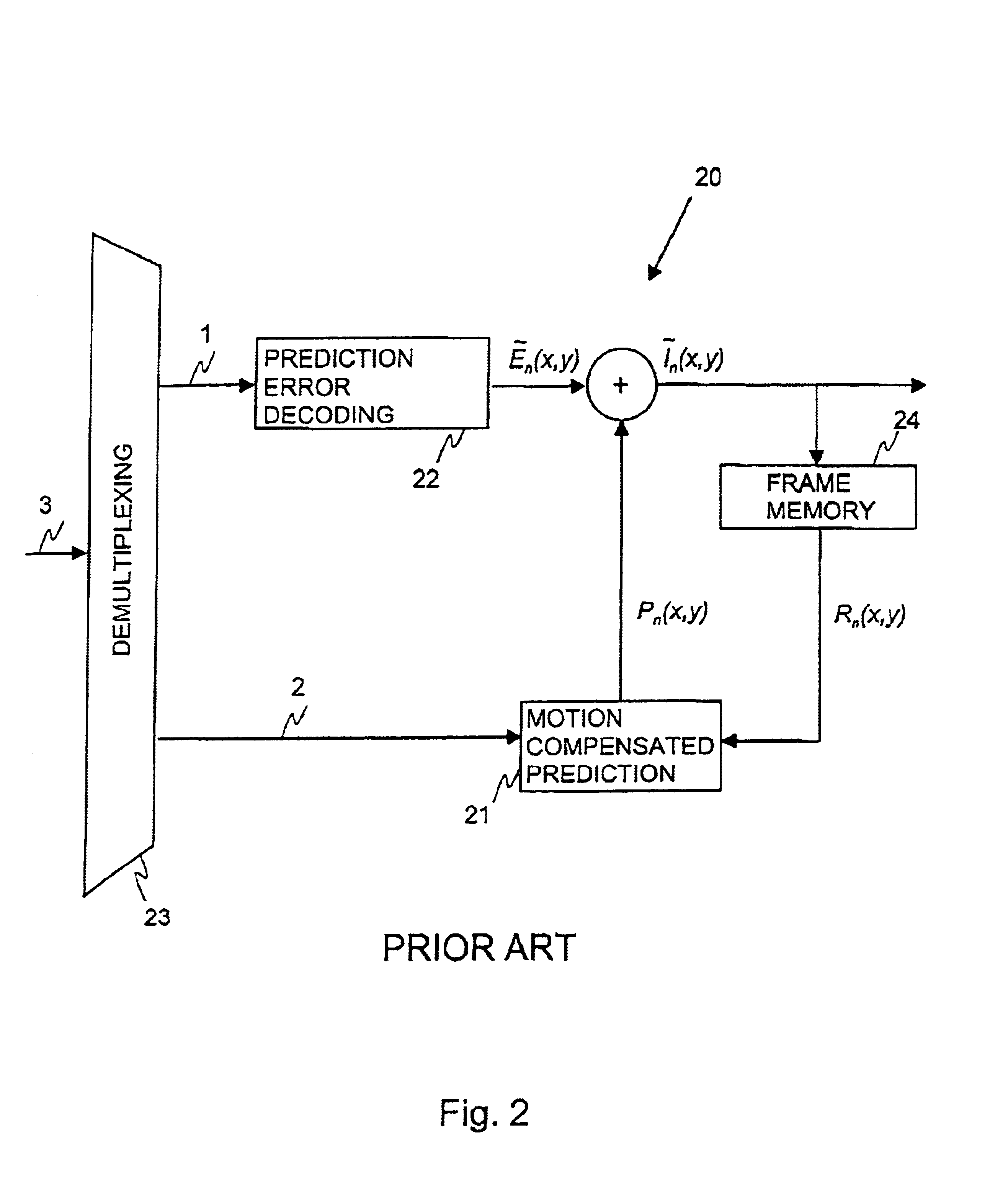Because of the relatively fast
frame rate, images in consecutive frames tend to be quite similar and thus contain a considerable amount of redundant information.
In many cases, this means that the overall change between one video frame and the next is rather small.
Sufficiently efficient compression cannot usually be achieved by simply reducing the various forms of redundancy in a given sequence of images.
Thus, most current video encoders also reduce the quality of those parts of the
video sequence which are subjectively the least important.
In the case of INTER frames, the predicted (motion-compensated) image is rarely precise enough to represent the
image content with sufficient quality, and therefore a spatially compressed prediction error (PE) frame is also associated with each
INTER frame.
However, due to the very large number of pixels in a frame, it is generally not efficient to transmit separate motion information for each pixel to the decoder.
However, this is impractical as it imposes too high a computational burden on the video
encoder.
Because of the error introduced by quantisation, this operation usually produces some degradation (loss of information) in the prediction error frame En(x,y).
Real motion, however, has arbitrary precision, and thus the
system described above can only provide approximate modelling of the motion between successive frames of a
digital video sequence.
Typically, modelling of motion between video frames with full pixel resolution is not sufficiently accurate to allow efficient minimisation of the prediction error (PE) information associated with each
macroblock / frame.
Thus, video coding standards, such as those previously mentioned, typically only allow motion vectors to have full-, half- or quarter-pixel resolution.
However, this is not an efficient solution in a video
encoder, because it is likely that the same sub-pixel value will be required several times and thus calculations to interpolate the same sub-pixel value will be performed multiple times. This results in an unnecessary increase of computational complexity / burden in the
encoder.
While limiting complexity, before-hand interpolation has the
disadvantage of increasing memory usage by a large margin.
Before-hand interpolation is also particularly inefficient in a
video decoder, as the majority of pre-calculated sub-pixel values will never be required by the decoder.
On the other hand, on-demand interpolation poses a much higher computational burden on the encoder, since sub-pixels may be interpolated many times. Hence the complexity of interpolation process, which may be considered in terms of the number of computational operations or operational cycles that must be performed in order to interpolate the sub-pixel values, becomes an important consideration.
A
disadvantage of TML5 is that the decoder is computationally complex.
Furthermore, since the values of some of the ¼ resolution sub-pixels depend upon the interpolated values obtained for other ¼ resolution sub-pixels, truncation of the ¼ resolution sub-pixel values has a deleterious effect on the precision of some of the ¼ resolution sub-pixel values.
Another
disadvantage of TML5 is that it is necessary to store the values of the ½ resolution sub-pixels in order to interpolate the ¼ resolution sub-pixel values.
However, a disadvantage of TML6 is that high precision arithmetic is required both in the encoder and in the decoder.
Furthermore, implementation of direct interpolation as specified in TML6 in an on-demand fashion has a
high memory requirement.
In view of the previously presented discussion, it should be appreciated that due to the different requirements of the video encoder and decoder with regard to sub-pixel interpolation, there exists a significant problem in developing a method of sub-pixel value interpolation capable of providing satisfactory performance in both the encoder and decoder.
 Login to View More
Login to View More  Login to View More
Login to View More 


